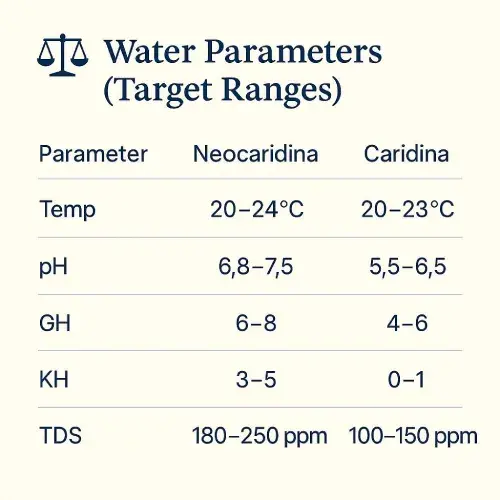Essential Shrimp Tank Setup Guide
- AquaScape Design
- Jul 14
- 2 min read
Updated: 2 hours ago
Essential Shrimp Tank Setup Guide: Professional Tips for Beginners
Setting up a freshwater shrimp tank correctly from the start is critical to long-term success in shrimp keeping. Whether you’re interested in Neocaridina or Caridina species, the fundamentals remain the same: stability, balance, and natural simplicity.
1. Tank Selection & Placement
Choose a tank of at least 20 litres, preferably 30L+, to ensure water parameter stability. Avoid placing it near windows or heat sources to prevent algae outbreaks and temperature fluctuations.
2. Filtration & Flow
Use a sponge filter (ideal for shrimp safety and biofilm) or a gentle hang-on-back (HOB) filter with intake guards. Ensure a low flow rate to avoid stress and support proper gas exchange.
3. Substrate Choice
• Inert substrate (e.g. sand or gravel): suitable for Neocaridina.
• Active substrate (e.g. ADA Amazonia): lowers pH and buffers water — ideal for Caridina.
Use remineralised RO water for consistency, especially with Caridina species.

5. Aquascaping & Plants
Add mosses (e.g. Java moss), floating plants, and low-demand species like Anubias or Bucephalandra. These provide hiding places and biofilm — essential for juvenile survival.
6. Cycling the Aquarium
Do not introduce shrimp until ammonia and nitrites consistently read 0 ppm and nitrates are stable below 20 ppm. The cycling process takes 4–6 weeks. Use a pure ammonia source or fish food to feed the nitrogen cycle.
7. Lighting & Maintenance
Use low-moderate intensity lighting (6–8 hours/day). Perform weekly water changes of 10–20%, ensuring the new water is temperature-matched and remineralised.
8. Shrimp Introduction
Only introduce shrimp after a full cycle and 1 week of stable parameters. Acclimate slowly using a drip method over 1.5–2 hours.
⸻
Final Tip:
Investing in quality shrimp food (such as plant-based lollies, powder blends, or mineral-rich botanicals) ensures healthy growth, vibrant colours, and increased breeding success.




Comments